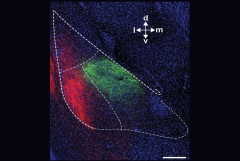Women who go on to develop postpartum depression (PPD) may have characteristic levels of neuroactive steroids, molecules derived from the hormone progesterone, in their blood during the third trimester of pregnancy, according to a new study by researchers at Weill Cornell Medicine and the University of Virginia School of Medicine. These molecules influence the brain’s stress response and emotional regulation.
The findings, published Jan. 30 in Neuropsychopharmacology, suggest that this may provide a way to identify women at risk of PPD before symptoms start, allowing doctors to intervene earlier. Postpartum depression, severe depression that happens after giving birth, affects 10-15% of new mothers, causing emotional struggles that can impact both the parent and child for years. Symptoms include difficulty bonding with the baby, feelings of hopelessness and sadness, fatigue, loss of appetite, difficulty sleeping, to name a few.







